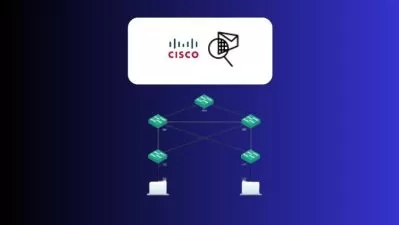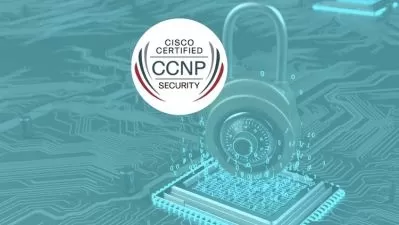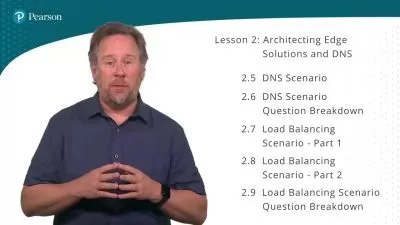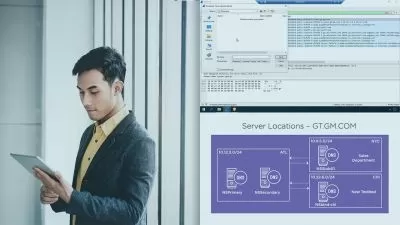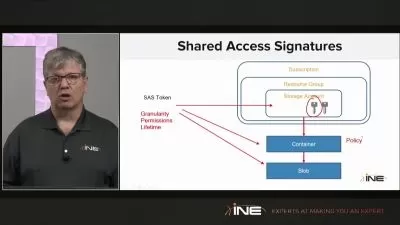300-420 ENSLD Online Training
Knox Hutchinson
26:00:46
Description
This intermediate Cisco CCNP Enterprise training prepares learners to take the 300-420 ENSLD exam, which is one of the concentration exams required to earn the CCNP Enterprise certification.
Network design engineers deal with setting up and managing the performance and security of the organization’s networks. The design engineer specifies the equipment, software, and connections. Network engineers then work with the network admin and support personnel who actually install and operate the network on a day-to-day basis.
More details
Executing implementation plans for enterprise networks requires deep knowledge of the many devices, tools, protocols and software that make those large networks possible. This training prepares a network administrator to earn their CCNP Enterprise by covering dual stack architectures, virtualization, infrastructure, security and much more.
For anyone with network administrators on their team, this Cisco training can be used for 300-420 ENSLD exam prep, onboarding new network administrators, individual or team training plans, or as a Cisco reference resource.
300-420 ENSLD: What You Need to Know
This CCNP Enterprise training covers 300-420 ENSLD network design exam objectives, including these topics:
- Understanding network design principles at the enterprise level (WAN, SD-WAN, WLAN, etc.)
- Configuring data path virtualization technologies
- Manipulating layers and configuring protocols like EIGRP, OSPF, NTP, HSRP, and more
- Diagnosing network problems with tools like syslog, pings, and trace route
- Configuring device access control and wireless security features
- Automating network tasks like configuration, troubleshooting or data collection
Who Should Take 300-420 ENSLD Training?
This CCNP Enterprise training is considered associate-level Cisco training, which means it was designed for network administrators. This network design skills course is designed for network administrators with three to five years of experience with advanced network design.
New or aspiring network administrators. If you're brand new to network administration, earning your CCNP Enterprise might be a high hurdle to clear at the very beginning of your career. But don't let that discourage you: this training covers all the exam's material, from network automation to infrastructure installation. Whether you're aiming to pass the CCNP exam or just want to know what an advanced network administrator needs to know for enterprise network implementation, this training delivers it.
Experienced network administrators. If you've been working as a network administrator for several years, this training will round out all the experience you've gained on the job and cover any areas you might not have been exposed to yet. There are six categories on the core CCNP Enterprise exam: architecture, virtualization, infrastructure, assurance, security, and automation -- you'll be ready for each after this training.
User Reviews
Rating
Knox Hutchinson
Instructor's CoursesThe personal touch, coupled with the ability to go at your own pace, makes video training far and away the best way to learn.
Knox brings a wealth of data analysis and visualization experience to CBT Nuggets. Knox started off as a CBT Nuggets learner, became a mentor in our Learner Community, and is now a trainer. Having benefited from the CBT Nuggets Learning Experience firsthand, Knox creates training that connects with learners. Knox also has a wide range of IT experience. Prior to joining CBT Nuggets, Knox worked as an IT consultant, advising in a variety of areas including networking, cloud computing, and project management.
Certifications: Microsoft MCSE: Cloud Platform and Infrastructure, Microsoft MCP: Administering SQL Server 2012/2014 Databases, Cisco DevNet Professional, Cisco CCNP: Enterprise, Certified Meraki Network Operator (CMNO), JNCIA-JUNOS, JNCIA-DevOps, Tableau Desktop Qualified Associate, and CompTIA Network+
Areas of expertise: Data analysis and visualization, business intelligence solutions
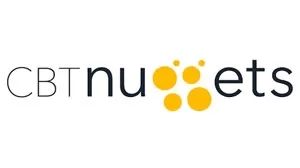
CBT Nuggets
View courses CBT Nuggets- language english
- Training sessions 239
- duration 26:00:46
- Release Date 2023/07/16










